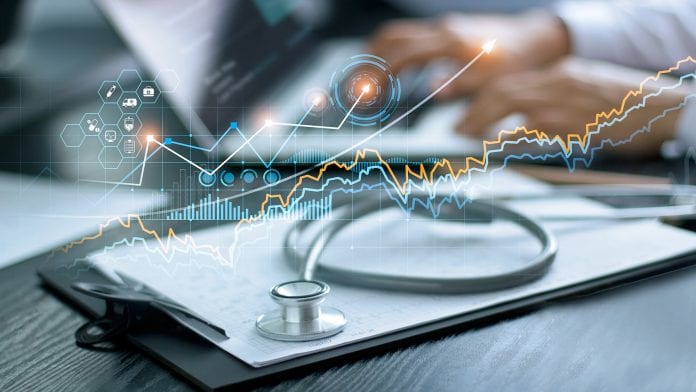
The Danish Health Data Authority’s comprehensive data programme has become a cornerstone of Danish healthcare’s response to COVID-19.
The outbreak of COVID-19 has changed the face of Danish healthcare. The move towards digitalisation both in treatment options and data collection has become more important than ever. The Danish Health Data Authority‘s have, together with the regions and other state agencies, led the way in providing digital solutions in a new era of healthcare and are a highly respected source of health data in Denmark. In the wake of the outbreak, they have been repurposing their pre-existing technologies in order to create a stronger data infrastructure in which a high influx of COVID test results can be accurately recorded. They have one of the most robust data collection and sharing platforms in the world and possess the knowledge and expertise in cyber security to keep this data safe. The Danish Health Data Authority’s talked to Health Europa Quarterly (HEQ) about their place in the healthcare landscape and their ongoing goals within digital innovation in the industry.
What is the role of The Danish Health Data Authority within the Danish healthcare landscape? What is the significance of a comprehensive healthcare data programme to the medical sector?
The Danish Health Data Authority operate on a national level as an institution under the Danish Ministry of Health, working to provide accessible healthcare data, digital solutions, and keeping data secure via a stronger focus on cyber security. Our primary objective being to make sure that we have better healthcare data and better digital solutions on a national level. We do this by creating, collecting and compiling data and using this to inform digital solutions that aid patients and healthcare facilities. In order to compile this data, we work with regional organisations, local governments, hospitals and private care facilities including care homes. This means that together with our partners we have an unprecedented platform of data, and we have opportunities that not every country has. Our work with data and digitalisation over the last forty years has enabled us to build a thorough and comprehensive database with which we can track people through their unique number, compiling their health records from birth until death. Therefore, we have a unique capsule of data which can be accessed in minutes by both the patient and the clinician. This data can be shared universally and updated instantly, meaning that a nurse in one part of the hospital can log a treatment and a doctor in another part of the hospital, or even the patient’s local GP, can view it in real time so the patient does not have to carry around letters or notes and clinical staff can collaborate more easily.

In the wake of COVID-19 secure digital healthcare is more important than ever.
Has technological innovation been a significant factor in developing solutions to prevent the spread of infection, for example in the use of telemedicine technology or the collection of patient data?
When COVID-19 hit we had to grow fast, and what we discovered was that we could develop our existing physical infrastructure and evolve our digital solutions so we could handle the challenges of the pandemic. A key example of this evolution is that we had a vaccination database that we used to record childhood vaccinations, we worked to expand the capacity of the system and have begun to use it to register the results of SARS-COV-2 field tests. And so, we managed to get physical solutions out on the market extremely fast because we have the platform to work on it already. Another thing is the COVID-19 test code, we have, together with the regions, developed and evolved our existing infrastructure, booking systems and databases and been able to rely on our existing data security measures, meaning we can formulate solutions to any data gathering issues without having to spend months developing new systems.
With growing numbers of clinicians and patients relying on telehealth and remote monitoring solutions, how can patients’ data be kept secure?
Data security has been a prime concern of ours, even prior to the introduction of the GDPR legislation and is always at the core of how we treat data. At the point of analysis, data is completely anonymised and we take the responsibility of handling personal data very seriously. We have a very high-security system for storing and sharing data and we monitor that all partners within hospitals, GP surgeries and care homes have sufficient cyber security measures to ensure any data they receive is protected. This has become particularly prevalent during the pandemic where the Danish healthcare system has been under increased pressure from cyber-attacks. However, our systems have never been breached. We further benefit from a high degree of trust and a good reputation amongst the Danish population.

The mobile app allows patients to become active partners in their own healthcare.
Is patient resistance ever an issue in the collection of healthcare data? How could this be ameliorated?
The citizens of Denmark have a deep-rooted trust in government authorities, bolstered by the fact that we have had very few instances of data misuse. However, we are very aware that that relationship needs maintaining and that if we do not properly secure data with innovative and up-to-date solutions then we may lose the public’s trust. In the wake of COVID-19, there has been an increased uptake of the MyHealth app, accessed through NemID, this allows patients to view COVID-19 test results, see their health card and look at previous medical history, including appointments and diagnoses. This has allowed citizens to feel more engaged with the health care system and become an active partner in their own health care as they now have open and easy access to their own data. When we work with data it is not only data that we receive from the hospitals or care facilities, but we also rely on data from patients directly, allowing us to have two flows of data from both authorities and the patient themselves. There is no doubt that being an active partner in their health care fosters the public’s trust in healthcare authorities and is key to ensuring they will continue to willingly provide data that can help create solutions for wider healthcare.
Is education a factor in streamlining the digital transition? As digital technologies become more prevalent in clinical settings, is there a need for wider digital education at the healthcare provider level?
Education does have an impact on the digital transition within healthcare, teaching staff how to use digital technologies within healthcare organisations is key. However, the data system is designed to be intuitive and with the far-reaching spread of technology for personal use, most staff will already possess basic technological skills. We are aware that we must build our data and digital solutions working closely with clinical professionals who more intimately understand how these technologies will later be implemented practically within healthcare. Often when working on a digital solution we start with the basic building blocks and piece them together to create a functioning solution, whilst ensuring that we keep the patients at the heart of the operation. Our digital healthcare system is highly developed and nearly every aspect is digitalised, the last thing which we are working towards is digitalising care for pregnant people, so they will no longer have to carry a physical file that documents their progress and the care they have received, instead it will all be hosted on a mobile app, and we are excited for this continued innovation within digital healthcare and our role within it.
Vibeke van der Sprong
Deputy Director General
Danish Health Data Authority
https://sundhedsdatastyrelsen.dk/da/english
This article is from issue 18 of Health Europa. Click here to get your free subscription today.








